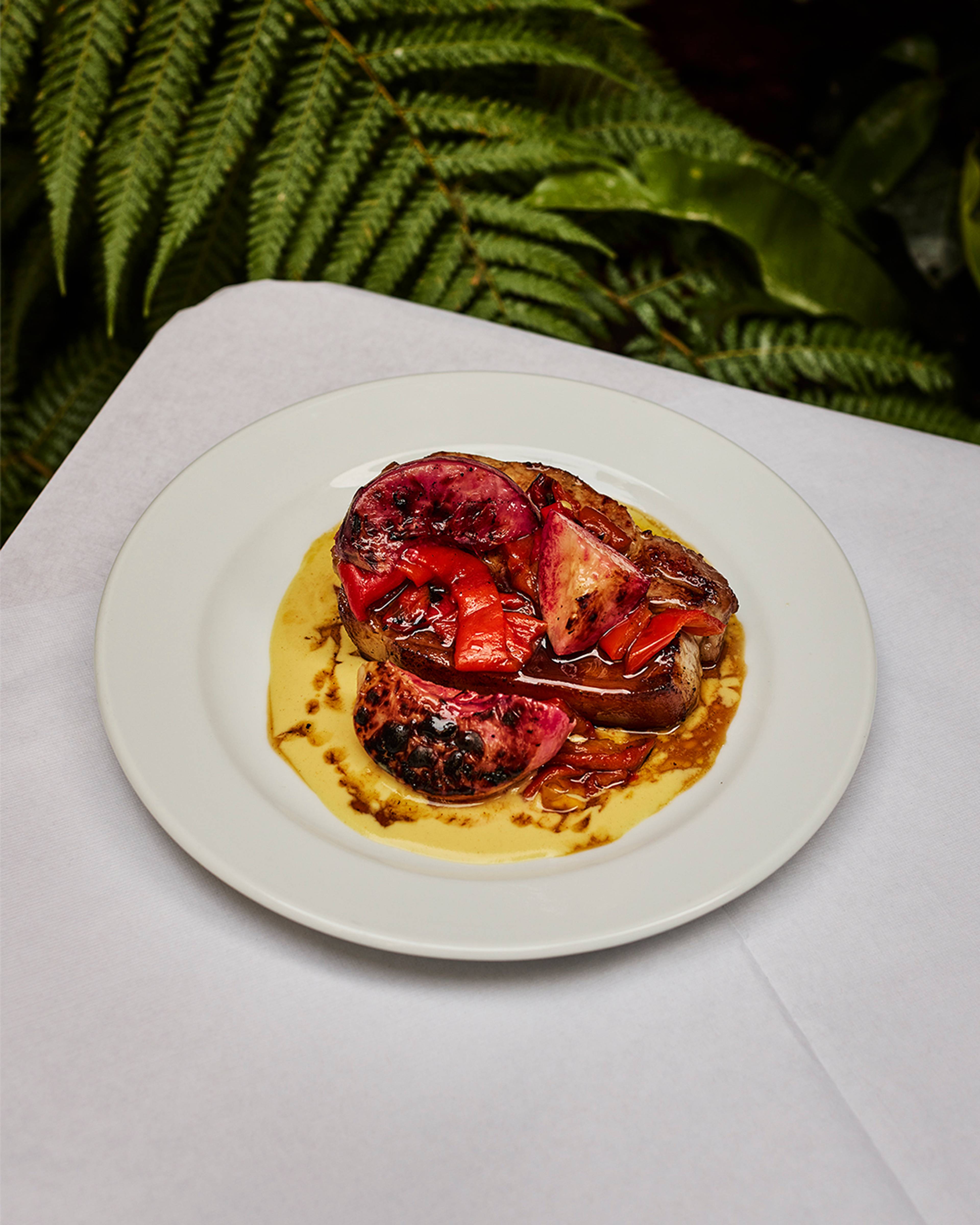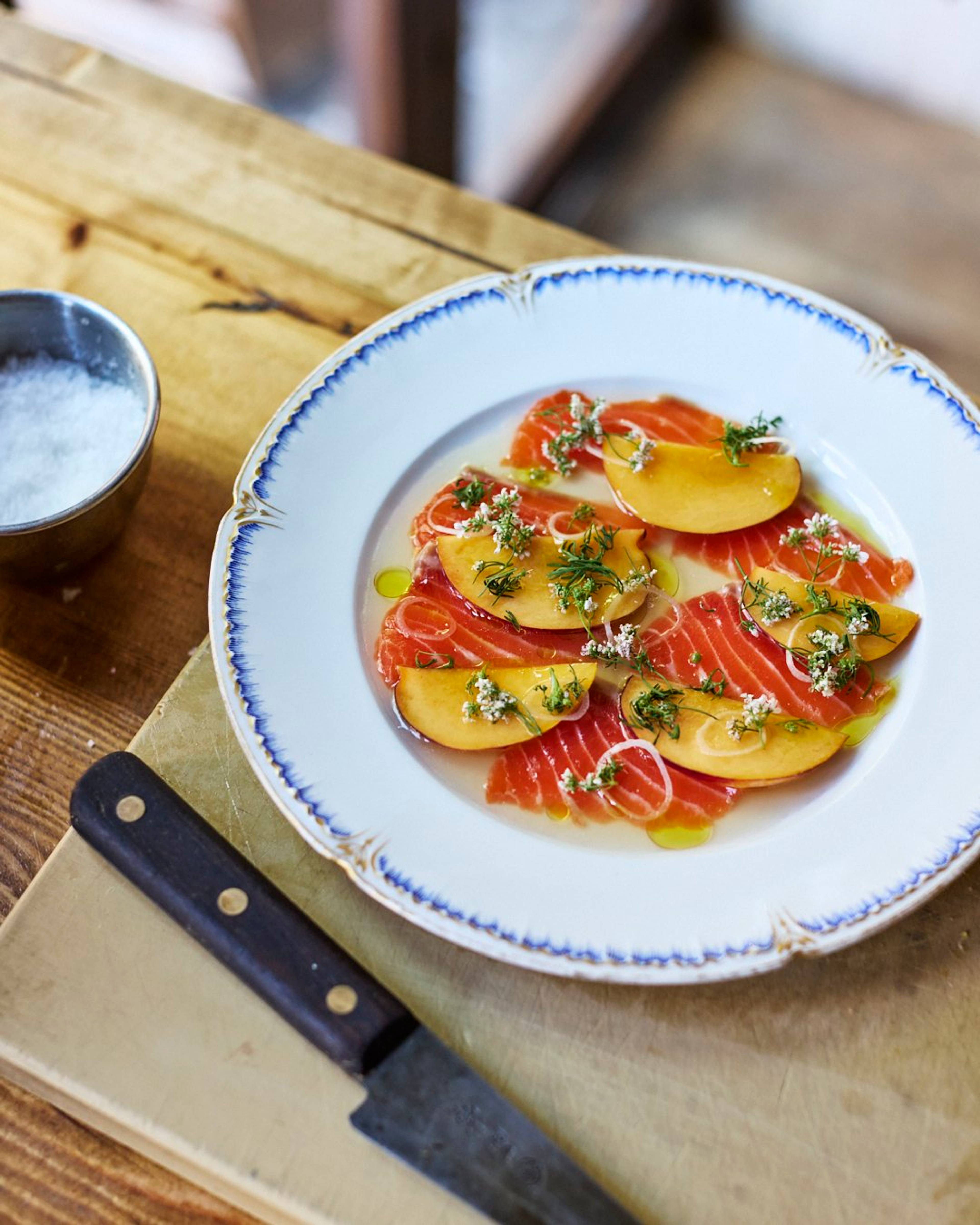DITCH UNIFORMITY

Ditch Uniformity Campaign, July 2022
This summer, we’re ditching uniformity in stone fruit to find next-level flavor.
The mainstream would have us believe that conformity means perfection in stone fruit. This myth has given rise to bland, symmetrical fruits bred and grown for extended shelf life and higher yields. Spots, scars and streaks are far from the marks of spoiled fruit. In peaches, nectarines and plums, they often signal concentrated sugars, complexity and intense flavor. Learn more about three of our stone fruit growers, and the lengths they go to in the pursuit of vital “imperfection.”

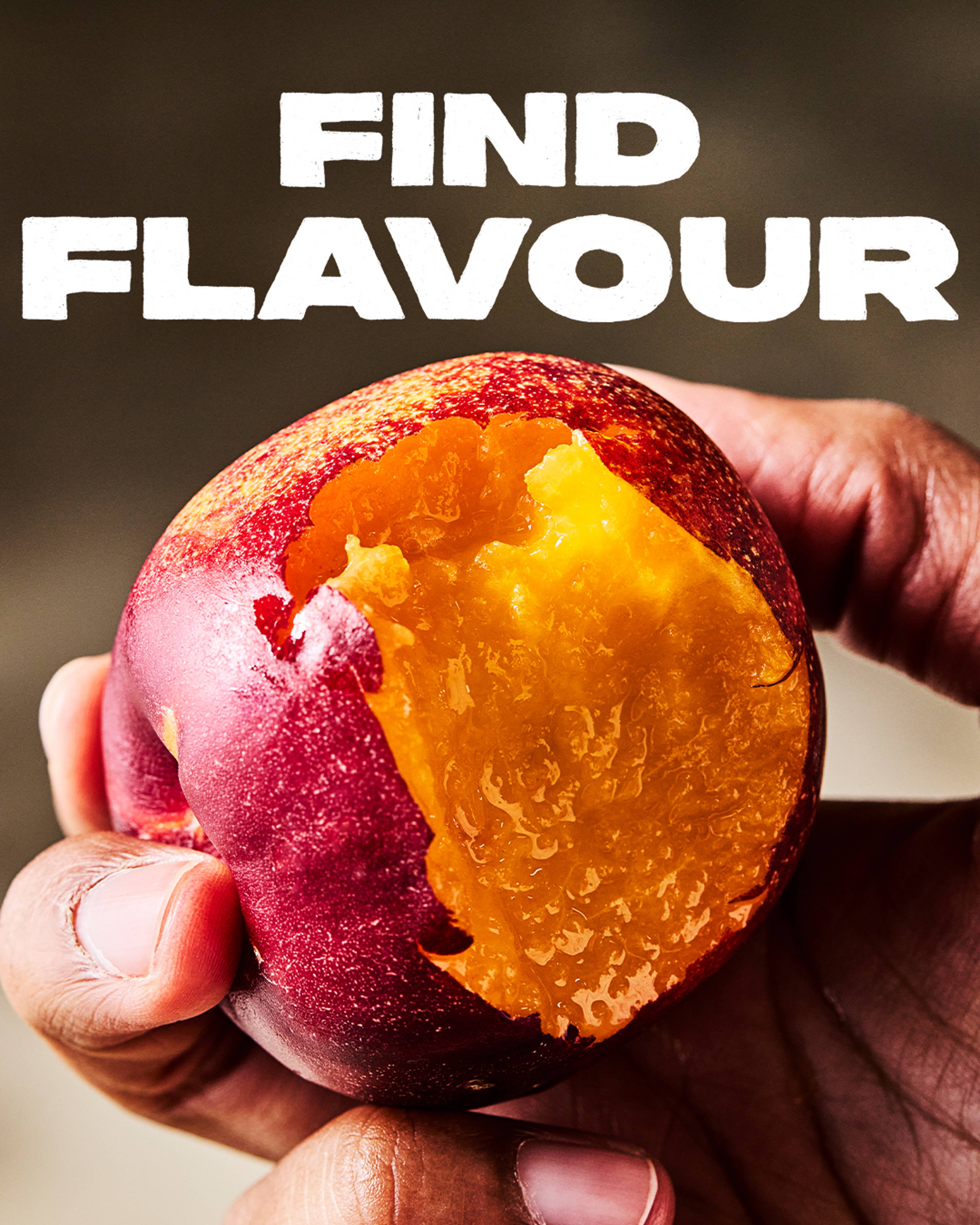
Yellow Nectarines — Seek out Spots
Grown by: Nick
Origin: Reedley, California
Season: Jun - Aug
Spots: a sign of such intense sugars in the flesh that they burst through to the skin. They will only appear where a grower has selected a variety for flavor, not yield, and is relentless in their pursuit of ripeness.
Variety:
Nick grows around 74 varieties of peaches, nectarines, apricots, plums, plumcots and other assorted stone fruits on 35 acres of land. Each has been selected and preserved for the unique flavors they bring to the table. This is his Carmen Miranda — a name that encompasses multiple varieties that ripen in succession and all display sugar spots.
Ripeness:
Nick allows his fruits to absorb their maximum concentration of sugars.
Each tree has a potential sugar level that it divides between its fruits: the fewer on the branch, the higher the sugar concentration in each fruit. Most conventional growers do not thin their trees beyond what is absolutely necessary, prioritizing yield over flavor.
Nick goes the other way. Early in the season, he thins his branches by identifying the fruits with the greatest potential and whose position on the branch will allow for the best growth later on in the season. He then removes any fruit which is damaged or that sits in a poor position. The remaining fruits are then able to absorb the maximum concentration of nutrients, sugars and minerals — the key to unbeatable flavor.
Stone fruit which is picked when underripe will never reach its full potential. Even so, most growers will harvest an entire tree at once to minimize labor. Plus, with mainstream channels unable to handle ripe, delicate fruits with a short shelf life, growers are geared towards a ‘ripen at home’ harvest.
Nick’s season is a carefully choreographed series of explosions. With each variety only ripe for ten days at the most, he passes over his trees multiple times a season, only ever picking fruit that has reached full maturity on the branch. Only by working direct with supporters like us can Nick’s fruit go beyond his orchard.
READ ON WITH RAVEN SMITH
Vogue columnist Raven Smith joins the conversation with his insights on how the pursuit of Instagrammable ‘perfection’ in food takes us away from real flavor.
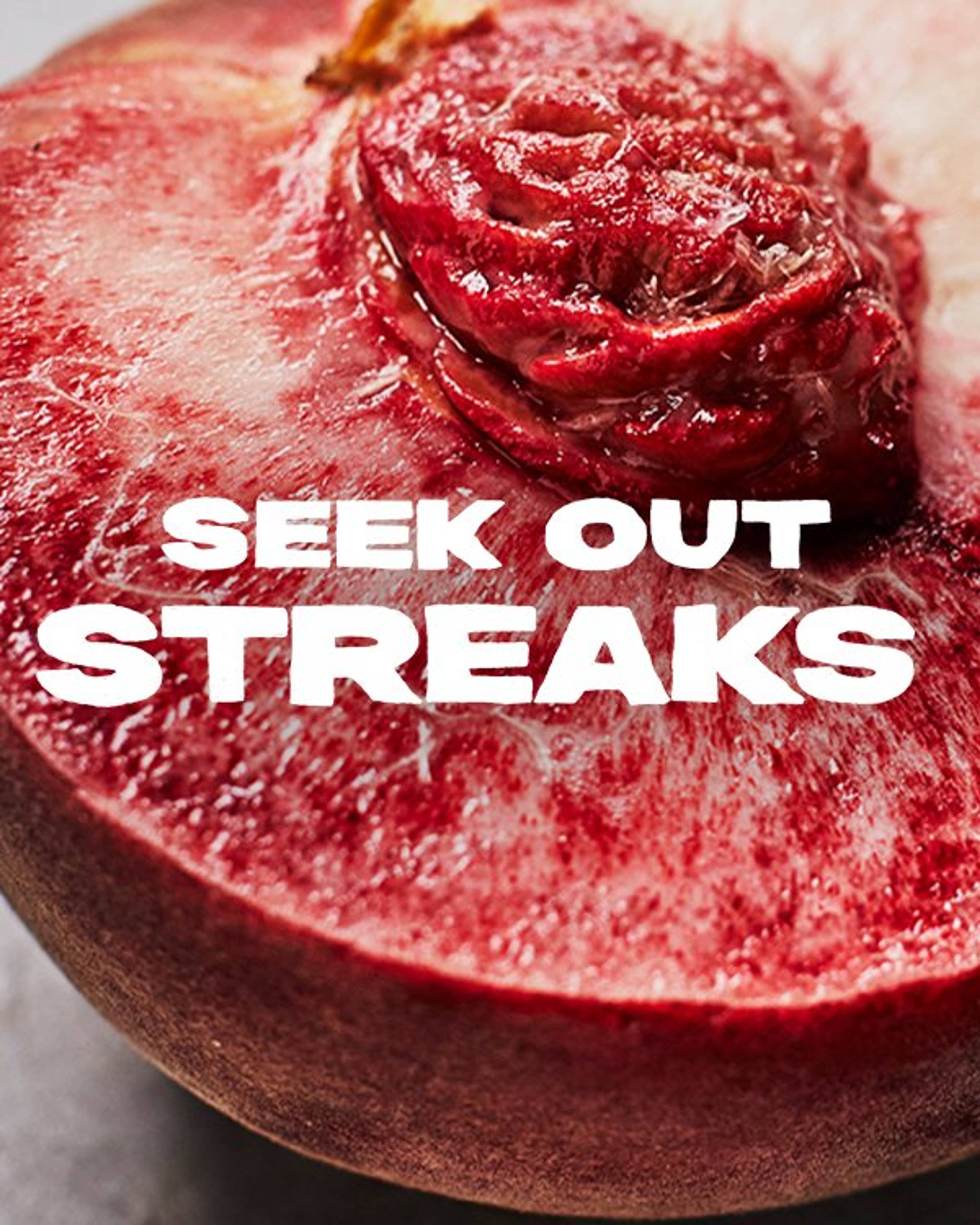
White Peaches — Seek out Streaks
Grown by: Domenico
Origin: Caserta, Campania
Season: Jun - Sep
Streaks: a sign of sugars balanced with a slight tartness and intense, berry-like aroma. They will only appear where a grower has selected a variety for flavor, not yield, and is committed to harvesting ripe.
Variety:
Domenico grows over 20 varieties of peaches. Each has been selected and preserved for their unique flavors. His Greta stands out for such high levels of anthocyanins (the same antioxidant that tints blueberries) that the flesh can be completely blushed with vibrant streaks.
Ripeness:
Domenico allows his fruits to absorb their maximum concentration of sugars.
Each tree has a potential sugar level that it divides between its fruits: the fewer on the branch, the higher the sugar concentration in each fruit. Most conventional growers do not thin their trees beyond what is absolutely necessary, prioritizing yield over flavor.
Domenico goes against the odds — thinning the young fruit from his trees so that the remaining peaches grow bigger and develop greater complexity.
Most growers will harvest an entire tree at once to minimize labor. With mainstream channels unable to handle ripe, delicate fruits with a short shelf life, growers are geared towards a ‘ripen at home’ harvest.
Domenico only ever harvests his peaches once they are fully ripe. Rather than compromising on flavor, we have adapted our supply chain so that we can bring Domenico's peaches to you with as little handling as possible along the way.
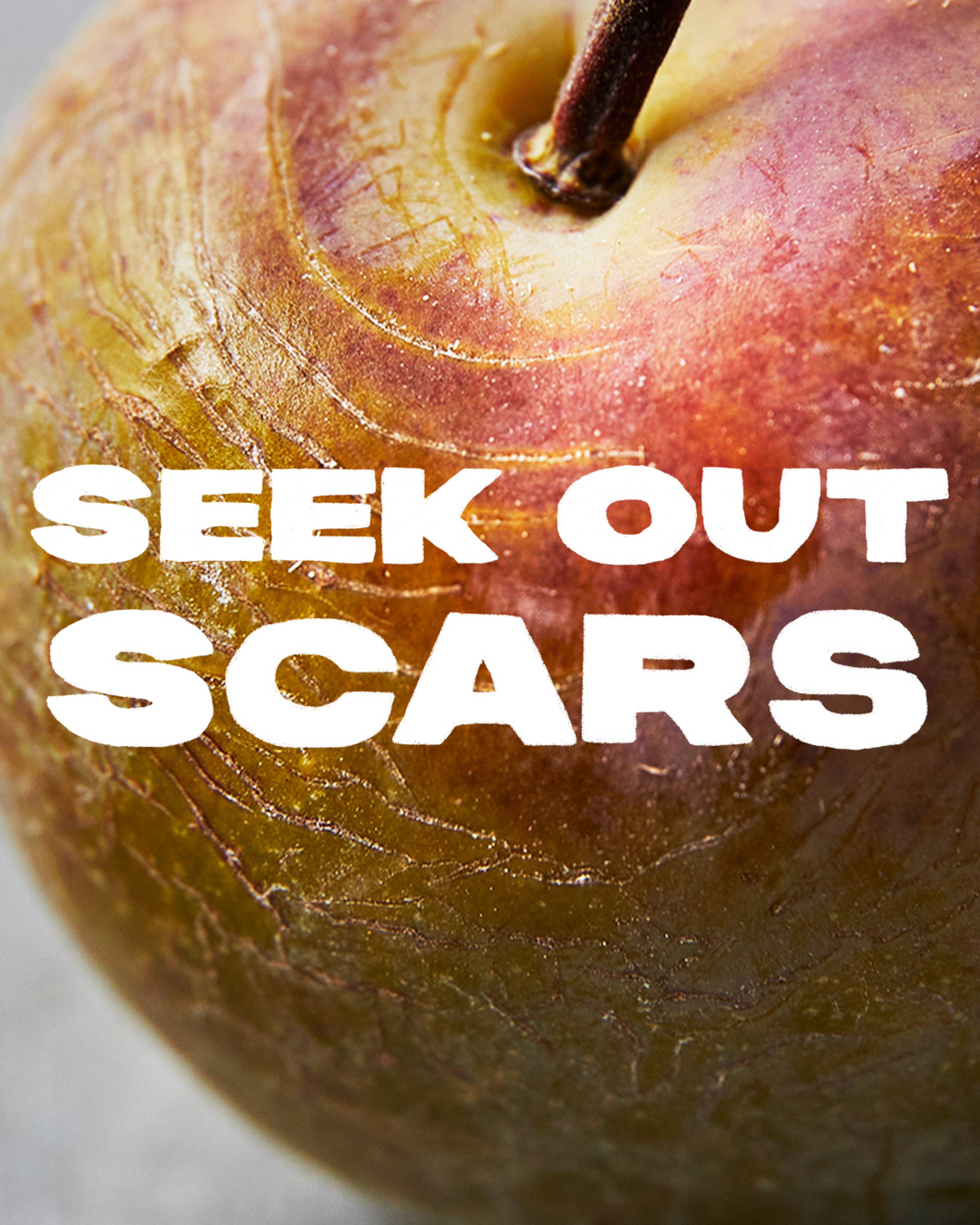
Reines Claudes — Seek out Scars
Grown by: Marc
Origin: Montauban, Tarn-et-Garonne
Season: Aug - Sep
Scars: a sign of intense flavors within. The scars that often appear on heritage varieties signal fruits preserved for their valuable characteristics. Often more difficult to bring to full maturity on the tree, the growers that persevere show a commitment to quality over yield.
Variety:
With their thin skins, Reines Claudes Dorées are particularly susceptible to damage, making fully ripe harvests almost entirely extinct. Marc — a fourth-generation stone fruit grower — has preserved the variety, recognizing the value of its truly fragrant, extra-sweet flesh with just the right amount of tartness and an attractive green to golden and even red skin.
Ripeness:
Marc allows his fruits to absorb their maximum concentration of sugars.
During their last week of ripening, rain could puncture the skins or collect in the dimple around the stalk, causing the flesh to swell. As a result, most growers abandon it entirely or, at best, harvest their fruits early to avoid damage in their final, valuable phase of growth.
Marc holds his nerve. He picks his Reine Claude only when perfectly ripe, taking the risk to deliver fruits only once they have developed their characteristic golden to red hues and honeyed, syrupy flesh. All being well the fruit on the top of the tree is harvested first. It is the first to ripen as it is more exposed to the sun. This is quickly followed by the fruit on the inside of the tree.
Go #OFFTHEPASS with stone fruit recipes from our community of chefs.
Stories
See allWe exist to fix the food system.
People are more cut off from the origins of their food than ever. This makes flavor, nutrition and farming practices that protect the planet, almost impossible to find.
By working directly with growers, we create a more sustainable way forward for farming. By giving everyone the tools to understand the power of our food choices, we empower everybody to become drivers of change.
Now is the time for action. Join the food system revolution.

Go beyond four seasons
Each fruit and vegetable has its own season, with subtle shifts which happen every day. Follow their microseasons to unlock flavor at every stage.
WHAT’S IN SEASON?

Know where your food comes from
We know the name of the person behind everything we source. Recognize their growing artistry to find out exactly where your food comes from (and why that matters).
MEET THE GROWERS

Make your diet diverse
Our growers work with varieties chosen for quality and nutrition, not yield. By selecting their crops you keep heritage seeds in play, add to ecosystem biodiversity and preserve unique flavors.
GO #OFFTHEPASS
United States
© 2024 Natoora Ltd.
